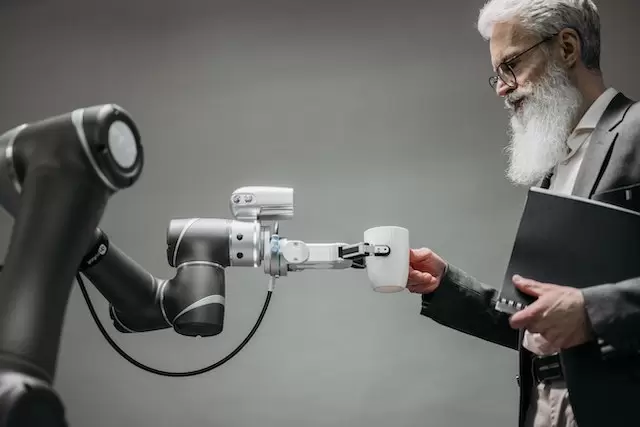Exploring the Future of Surgery: Robotic Surgery Devices
Introduction
Robotic surgery has revolutionized the field of medicine, providing advanced tools and technologies that enhance the precision and effectiveness of surgical procedures. In this article, we will delve into the world of robotic surgery devices, exploring their significance, applications, and the impact they have on modern healthcare.
Table of Contents
-
The Rise of Robotic Surgery
- Historical Context
- Advancements in Robotics
-
Understanding Robotic Surgery Devices
- Key Components
- Types of Surgical Robots
-
Applications in Healthcare
- General Surgery
- Cardiothoracic Surgery
- Urology
- Gynecology
- Orthopedics
-
Advantages and Challenges
- Precision and Dexterity
- Minimally Invasive Procedures
- Learning Curve
- Cost and Accessibility
-
The Future of Robotic Surgery
- Emerging Technologies
- Artificial Intelligence and Machine Learning
- Remote Surgery
-
Ethical and Regulatory Considerations
- Patient Safety
- Legal Framework
The Rise of Robotic Surgery
Historical Context
Robotic surgery devices may seem cutting-edge, but their history dates back to the early 1980s when the first robotic surgical system, the PUMA 560, was used for neurosurgical biopsies. Since then, these devices have seen significant advancements and expanded applications.
Advancements in Robotics
The rise of robotics in surgery can be attributed to technological breakthroughs, including improved sensors, better precision, and enhanced computer-assisted capabilities.
Understanding Robotic Surgery Devices
Key Components
Robotic surgery devices consist of three primary components: the surgeon’s console, the patient-side cart, and a high-definition 3D vision system. These elements work together to ensure precise control and visualization during surgery.
Types of Surgical Robots
There are various types of surgical robots, from multi-armed systems to smaller, single-arm devices. Each type serves specific purposes and caters to different surgical specialties.
Applications in Healthcare
Robotic surgery devices have found applications in numerous medical fields, including:
General Surgery
In general surgery, robots aid in procedures like colon and gastric surgery, offering increased precision and faster recovery times for patients.
Cardiothoracic Surgery
Robotic-assisted heart surgery allows for intricate cardiac procedures with minimal invasiveness.
Urology
Robots are employed in urological surgeries, such as prostatectomies, enhancing the surgeon’s ability to perform delicate tasks.
Gynecology
Gynecological procedures like hysterectomies benefit from the precision of robotic systems, reducing the impact on patients.
Orthopedics
In orthopedic surgery, robots assist in procedures like knee and hip replacements, ensuring precise implant placement.
Advantages and Challenges
Precision and Dexterity
Robotic surgery offers unparalleled precision and dexterity, minimizing the risk of human error during complex procedures.
Minimally Invasive Procedures
Robotic systems enable minimally invasive surgery, reducing pain, scarring, and recovery times for patients.
Learning Curve
Surgeons require training to operate these devices effectively, which can be a challenge for healthcare institutions.
Cost and Accessibility
The initial investment in robotic surgery technology can be substantial, and its availability varies across regions.
The Future of Robotic Surgery
Emerging Technologies
The field of robotic surgery continues to evolve, with innovations such as haptic feedback systems and improved robotics.
Artificial Intelligence and Machine Learning
Robotic surgery devices increasingly incorporate AI and machine learning algorithms, enhancing decision-making during surgery.
Remote Surgery
Telemedicine and robotic surgery enable surgeons to perform procedures remotely, expanding access to healthcare.
Ethical and Regulatory Considerations
Patient safety is paramount in robotic surgery, and there are legal frameworks in place to ensure that medical professionals and institutions adhere to strict guidelines.
FAQs
1. How does robotic surgery differ from traditional surgery?
Robotic surgery allows for greater precision, smaller incisions, and quicker recovery times compared to traditional open surgery.
2. Are robotic surgery devices accessible in all healthcare institutions?
The availability of robotic surgery devices can vary depending on the healthcare institution and its resources. Larger, specialized hospitals are more likely to have this technology.
3. Are there any risks associated with robotic surgery?
As with any medical procedure, there are risks, but robotic surgery has been shown to reduce the risk of human error and complications in many cases.
4. Can any surgeon operate a robotic surgery device?
Surgeons need specialized training to operate robotic surgery devices effectively, as these systems require a unique skill set.
5. What is the cost difference between traditional surgery and robotic surgery?
Robotic surgery may have a higher initial cost due to the purchase and maintenance of equipment, but it can lead to cost savings in terms of shorter hospital stays and quicker recovery.


